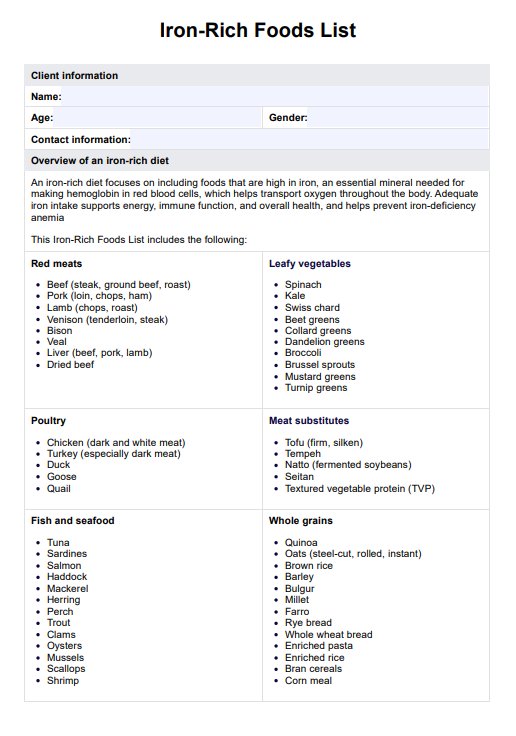Having too much iron is a bad thing. It can lower the body’s ability to absorb zinc, cause ulcers and inflammations, and lead to organ failure.

Iron-rich Foods List
Download our free Iron-rich Foods List to help you shop for iron-rich foods to add to your diet!
Use Template
Iron-rich Foods List Template
Commonly asked questions
Yes. You can get enough iron by consuming plant-based foods, but you might need supplements to boost your iron intake.
Those with iron deficiency will likely have pale skin, dizziness, headaches, shortness of breath, fatigue, weakness, rapid heartbeats, brittle nails, and hair loss.
EHR and practice management software
Get started for free
*No credit card required
Free
$0/usd
Unlimited clients
Telehealth
1GB of storage
Client portal text
Automated billing and online payments











